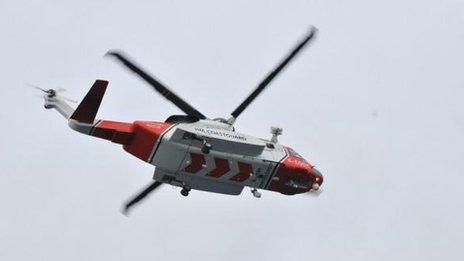Boscastle: The village 'washed on to the map'
- Published

Margaret Templar of the Riverside Hotel in Boscastle had to be airlifted to safety with grandson Kieron
It is 10 years since a huge surge of water hit Boscastle, destroying four buildings and sending cars careering into the harbour. Some 7.9ins (200mm) of rain had fallen in 24 hours, leading to rivers bursting their banks. Yet, despite the devastation, many villagers now see it as a good thing.
About 100 people were airlifted to safety after the flash flood hit the Cornish village on 16 August 2004.
Margaret Templar was among the first people airlifted from the Bridge Walk row of shops.
"I think we were on an adrenalin rush because I was not scared," she said.
Standing opposite the roof from where she was airlifted, she said: "They just put the winch on and you were gone. We were in a surreal situation. I didn't click how dangerous it was until afterwards."
Airlifted with her grandson Kieron, her husband Peter was later rescued, along with their daughter Adrienne, her partner Shane, and their child Amber. They were among a total of 55 people, along with the family dog Izzy, to be pulled to safety by an RAF helicopter that day.
Mrs Templar and her husband run the Riverside Hotel, which was flooded on the first floor to a depth of about half a metre (2ft). The main bridge in the village, next to the hotel, had become blocked by debris from the River Valency.
And, when the wall of water, sparked by a freak rainstorm on higher ground, reached the blockage the rivers Valency and Jordan were unleashed on Boscastle.
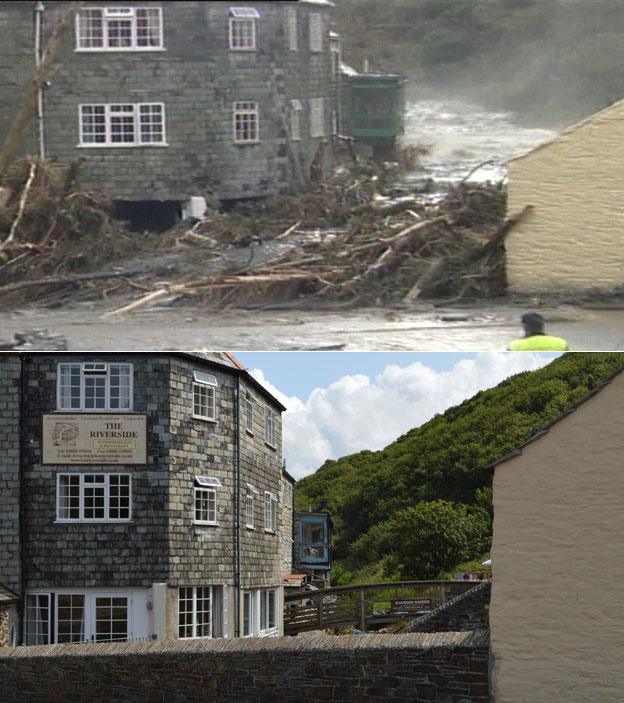
In 2004, trees blocked the main bridge over the River Valency - contrasting with the peaceful scene today
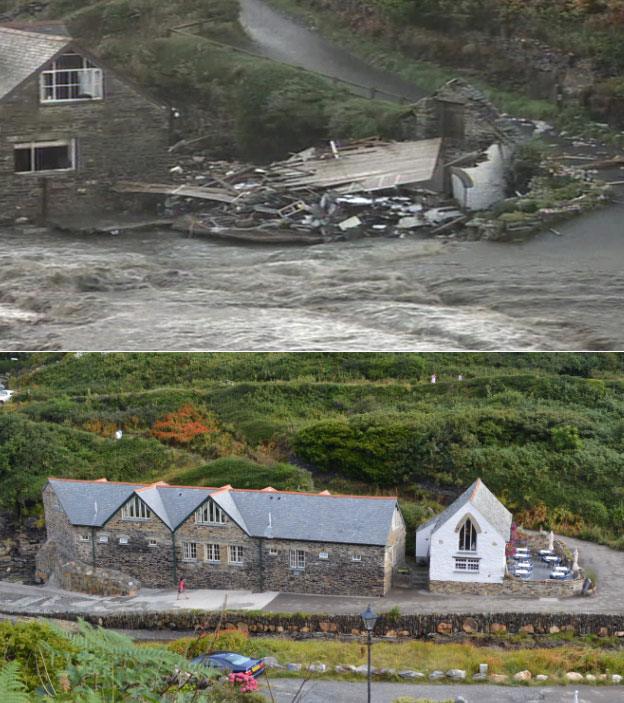
The Harbour Light shop was destroyed by vehicles crashing into it but it has since been rebuilt
As a result more than 100 vehicles in the car park were lifted up and washed downstream, the tourist information centre, two shops and a cafe were destroyed and stranded people were airlifted to safety from rooftops.
But the Templars, along with other villagers, believe the long-term effects of the flooding have been positive.

About 80 cars were washed through Boscastle by the water
Boscastle flooding in numbers
2m tonnes (440m gallons) of rainwater flowed through Boscastle in one day
At the height of the incident, 6,350 cubic feet (180 cubic metres) of water were flowing down the River Valency every second
Fifty eight properties were flooded with four destroyed
A total of 150 vehicles were swept away. Eighty-four cars were later recovered from Boscastle harbour, but more than 30 were swept out to sea.
Seven rescue helicopters winched about 100 people to safety
Some 1,850 tonnes (150 lorry loads) of flood debris were removed by the Environment Agency following the floods.
£10m spent on flood defences.
Source: Environment Agency

A £10m flood prevention scheme by the Environment Agency and the National Trust, which owns large parts of the village, includes:
Widening of the River Valency by 3m (10ft) and lowering it by 2m (7ft)
Raising the car park and adding a new permeable surface
A new bigger culvert where the Jordan and the Valency rivers join
"Braiding" of the river valley through a network of channels separated by small islands, which slows the water flow.
The Environment Agency has also installed three gauges on the River Valency to monitor water levels which trigger a warning when they pose a flooding risk.
It said the work meant Boscastle was now able to withstand the worst floods in every 75 years.
Mr Templar said he thought the work controlling the flow of the river had been "fantastic".
"It's worked, we have had some wet winters and the river has hardly risen at all," he said.
Children have been taught about the flooding as part of their school curriculum in the village.

What caused the Boscastle floods?
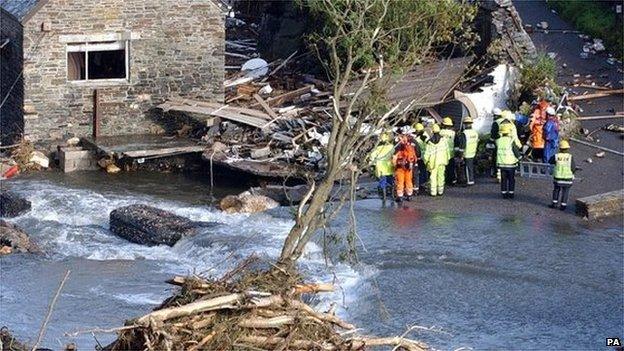
The Environment Agency spent £10m on anti-flooding measures
Boscastle was one of a number of Cornish communities hit by intense and short-lived storms that grew out of a large depression and low pressure area that dominated the eastern Atlantic that day.
Most of the rain actually fell on higher land and was washed down the steep-sided valleys to Boscastle.
People reported waves or a wall of water hitting the village, raising levels by several feet in just seconds.
A study by the Met Office suggests sudden downpours producing flash floods, like those in Boscastle, could happen more often as a result of climate change.
But it said that improvements in its forecasting capabilitie, externals since 2004 mean it is now "more likely" to spot sudden downpours.
An Environment Agency spokesman said: "One of the lessons we've learned is the need for better information about vulnerable catchments.
"We're compiling a national register of catchments where heavy rainfall is likely to make river levels rise very rapidly and the depth and speed of floodwaters could endanger lives."

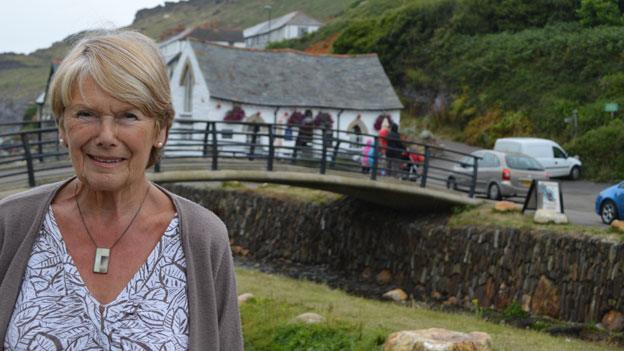
Trixie Webster saw her Harbour Light shop, now rebuilt, levelled in the floods
"People come because Boscastle has been put on the map," said Tracy Lane de Courtin, who runs the Cornish Stores shop with her husband Guy, who was airlifted from the roof.
The downside is that the shop's insurance has tripled.
Pictures of the flooding, including the shop's crushed van that was washed into the harbour, are on the walls of the village grocery shop and are still a talking point for visitors.
Former coastguard Tim Irving Little, who now runs a pottery in the village, said: "Boscastle has always been a popular little place but fairly undiscovered.
"People went to Tintagel because they'd heard about King Arthur and they stumbled upon Boscastle. Now everyone's heard of Boscastle.
"We had to get washed off the map to get put on the map."
Since the flooding, a gig rowing club has been created, the chamber of commerce has been revived and a food and arts festival takes place every October, all as a result of the floods, according to shopkeeper Odette Rigby Jones.
"It was because of the flood that people got together," she said. "We have become closer."
She said her shop was "more busy than ever". "It's strange to say something like that was actually good for the village, but a lot more people are coming here."

An RNAS Culdrose helicopter airlifted 12 people from the visitor centre before it partially collapsed
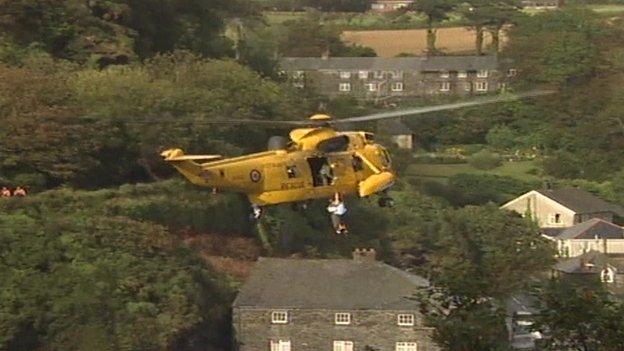
Two RAF helicopters from RMB Chivenor rescued nearly 60 people
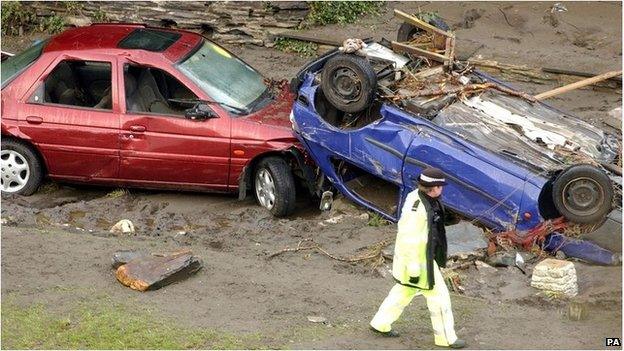
Cars stacked up after the deluge but no-one died in the flooding
Trixie Webster, who was born and raised in Boscastle, saw her Harbour Light shop levelled in the floods.
"Each car that came down the river hit my shop and destroyed it," she said.
Seven helicopters, three from the RAF, three from the Royal Navy and a coastguards helicopter flew to the rescue.
The helicopters, dubbed the Magnificent Seven by villagers, will be replaced following the privatisation of UK air rescue services which coastguards say will lead to faster response times to Boscastle.
Amazingly, no-one died in the flooding and apart from an elderly woman who lost two fingers, no-one was seriously injured.
Despite the drama though, no big events are being planned to mark the events and apart from a few plaques to record the height of the water, there is little to remind visitors of what happened that day.
Museum worker Carole Talboys said: "We are not mourning our lost, we are [simply] mourning stones and you can't do that for long."
- Published16 August 2014

- Published16 August 2014
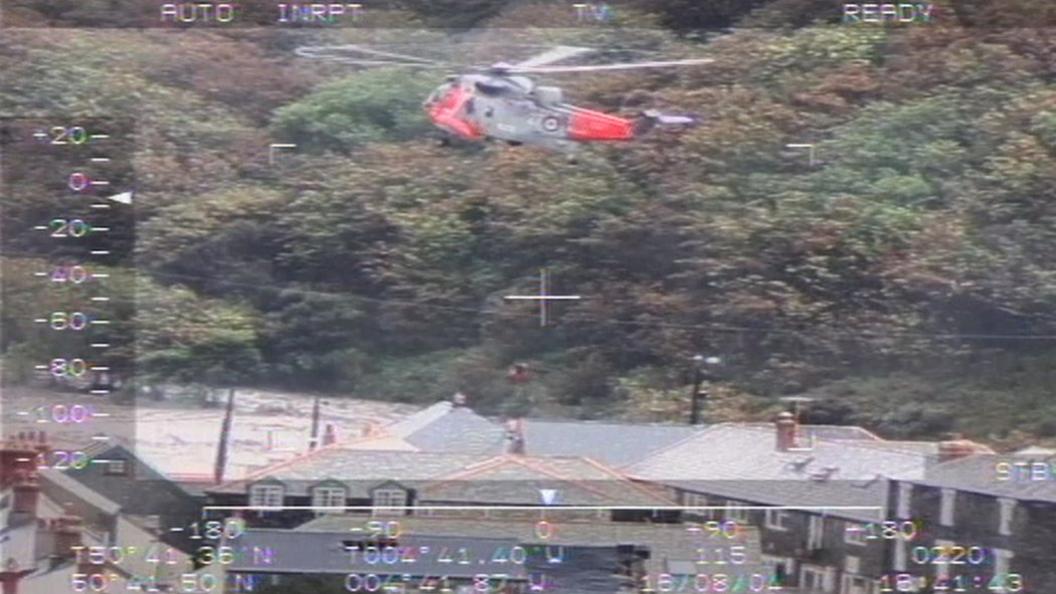
- Published16 August 2014
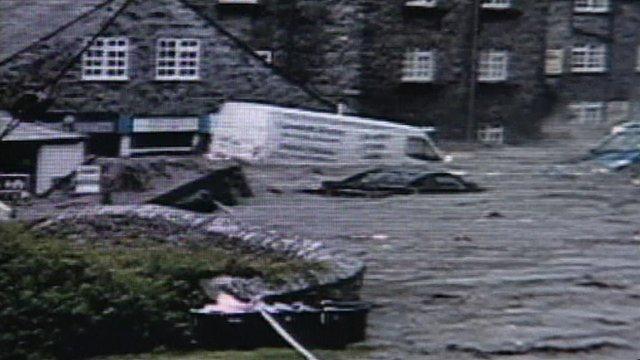
- Published1 June 2014

- Published12 September 2013

- Published26 March 2013
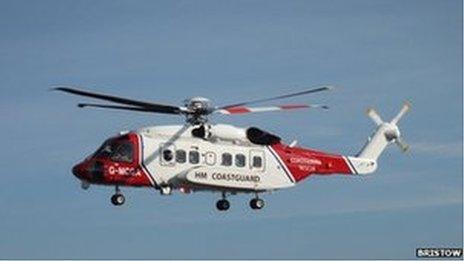
- Published26 March 2013
